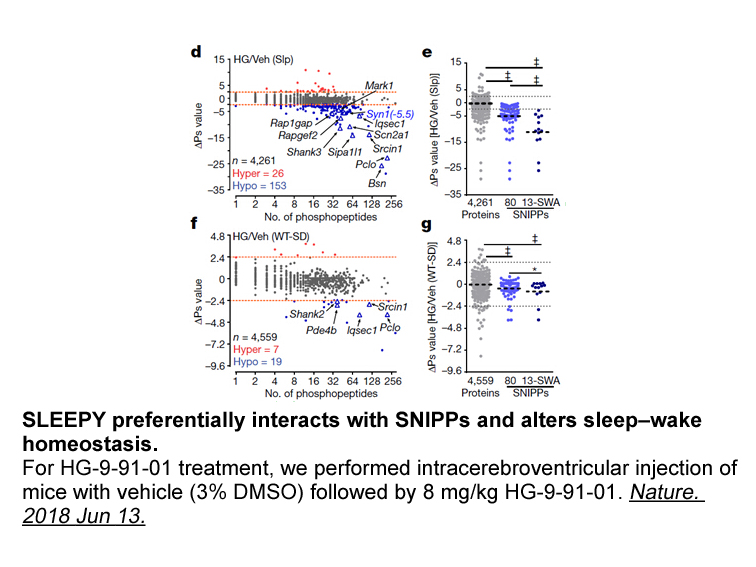Archives
br Downstream signalling of AKT A consensus phosphorylation
Downstream signalling of AKT
A consensus phosphorylation motif has been described for AKT substrates: R-X-R-X-X-S/T-B where X represents any amino WYE-132 mg and B represents bulky hydrophobic residues (Alessi, Caudwell, Andjelkovic, Hemmings, & Cohen, 1996). Numerous AKT substrates have been published in the literature, with several being extensively validated that impact on multiple cellular processes including: cell growth, proliferation and survival, cellular metabolism, glucose uptake and angiogenesis (Table 1; Manning & Cantley, 2007). Importantly there is great overlap and crosstalk between substrate functions, with many substrates being regulated directly by AKT phosphorylation, as well as indirectly, through AKT-mediated phosphorylation of transcription factors. AKT signalling therefore plays a central role in multiple pathways involved in tumourigenesis and hyperactivation of the PI3K/AKT pathway is a common occurrence in cancer (Liu, Cheng, Roberts, & Zhao, 2009).
AKT in normal physiology
As well as playing a central role in cancer, AKT signalling is also essential for normal cellular physiology. In adults, AKT1 expression is ubiquitous, expression of AKT2 is elevated in insulin-responsive tissues and expression of AKT3, whilst found at low levels in all tissues, is more highly expressed in the brain and endocrine tissues (http://www.proteinatlas.org/; Uhlen et al., 2010, Uhlén et al., 2015).
AKT plays an essential role in glucose homeostasis and a deleterious effect of pharmacological inhibition of AKT is hyperglycaemia and hyperinsulinaemia which correlates with peak plasma l evel drug concentrations (Crouthamel et al., 2009). The AKT substrate GSK3β (glycogen synthase kinase beta) phosphorylates and inhibits glycogen synthase, preventing glycogen synthesis. AKT activation results in phosphorylation and inhibition of GSK3β relieving the inhibitory effect on glycogen synthase, resulting in glycogen synthesis. As well as stimulating glycogen synthesis, AKT also promotes cellular uptake of glucose by prompting translocation of the glucose transporter GLUT4 to the plasma membrane. The AKT substrate directly involved in this process has not been well-defined and several candidate proteins are described in the literature (Manning & Cantley, 2007).
AKT function (especially AKT1 and AKT2) is also important for regulating cardiac growth, contractile function and coronary angiogenesis. It is essential for maintaining normal endothelial function and endothelial nitric oxide synthesis, with increased atherosclerosis and peripheral vascular disease demonstrated in Akt1 knockout mice (Hers, Vincent, & Tavare, 2011). AKT also has a pro-thrombotic effect, promoting platelet activation and aggregation, highlighting the need for tight control of AKT signalling (Hers et al., 2011). As well as its role in the cardiovascular and endocrine systems, AKT has also been shown to be neuro-protective and plays a role in synaptic transmission between neurons (Hers et al., 2011). Taken together therefore, given the wide-ranging effects of AKT signalling in normal human physiology, there is vast scope for significant on-target as well as off-target effects of AKT inhibitors in the clinic.
evel drug concentrations (Crouthamel et al., 2009). The AKT substrate GSK3β (glycogen synthase kinase beta) phosphorylates and inhibits glycogen synthase, preventing glycogen synthesis. AKT activation results in phosphorylation and inhibition of GSK3β relieving the inhibitory effect on glycogen synthase, resulting in glycogen synthesis. As well as stimulating glycogen synthesis, AKT also promotes cellular uptake of glucose by prompting translocation of the glucose transporter GLUT4 to the plasma membrane. The AKT substrate directly involved in this process has not been well-defined and several candidate proteins are described in the literature (Manning & Cantley, 2007).
AKT function (especially AKT1 and AKT2) is also important for regulating cardiac growth, contractile function and coronary angiogenesis. It is essential for maintaining normal endothelial function and endothelial nitric oxide synthesis, with increased atherosclerosis and peripheral vascular disease demonstrated in Akt1 knockout mice (Hers, Vincent, & Tavare, 2011). AKT also has a pro-thrombotic effect, promoting platelet activation and aggregation, highlighting the need for tight control of AKT signalling (Hers et al., 2011). As well as its role in the cardiovascular and endocrine systems, AKT has also been shown to be neuro-protective and plays a role in synaptic transmission between neurons (Hers et al., 2011). Taken together therefore, given the wide-ranging effects of AKT signalling in normal human physiology, there is vast scope for significant on-target as well as off-target effects of AKT inhibitors in the clinic.
Selectivity within the AKT pathway
The phenotypes of Akt null mice have suggested non-redundant roles for the three isoforms, with Akt1 knockout being embryonic lethal, Akt2 null mice developing insulin-resistant diabetes and Akt3 knock-out resulting in microcephaly (Toker & Marmiroli, 2014). In keeping with this, findings from pre-clinical studies, are consistent with AKT isoforms having partially overlapping, but distinct functions in cancer cells (Clark and Toker, 2014, Toker and Marmiroli, 2014). Phosphoproteomic screens have demonstrated unique and common substrates for each of the AKT isoforms and functional studies have started to highlight the physiological relevance of these findings, for example during RNA processing in lung cancer (Sanidas et al., 2014). Isoform-mediated specificity has been best studied in breast cancer models however, where differential functions of AKT1, -2 and -3 in both inhibiting and promoting cell migration and proliferation have been demonstrated (Clark & Toker, 2014).